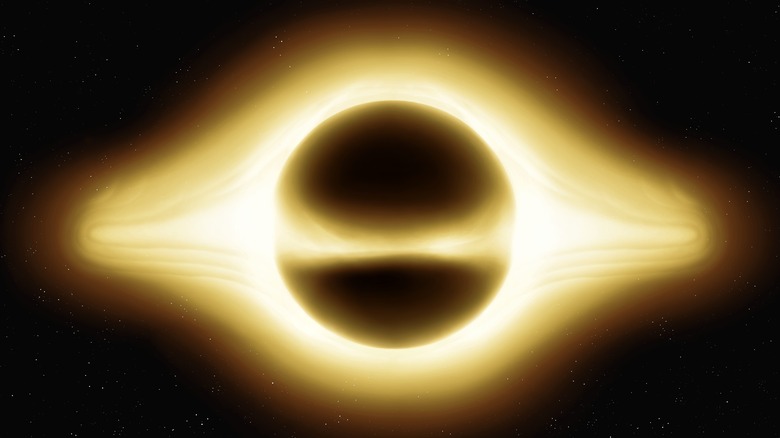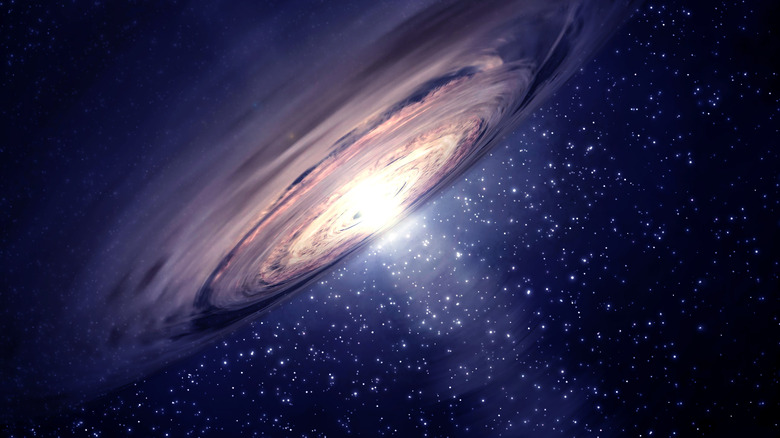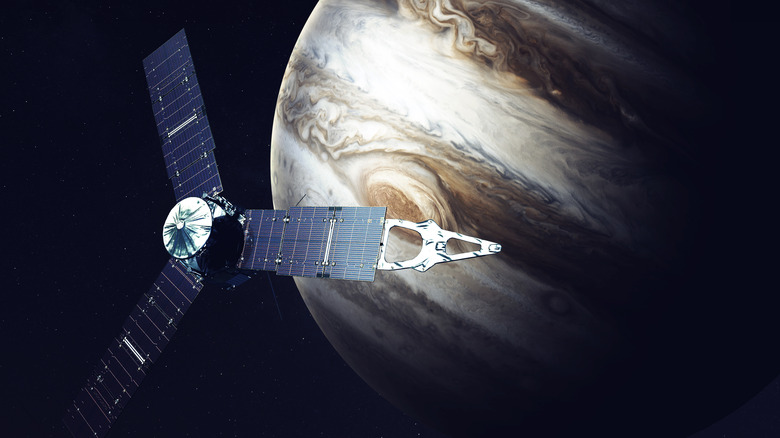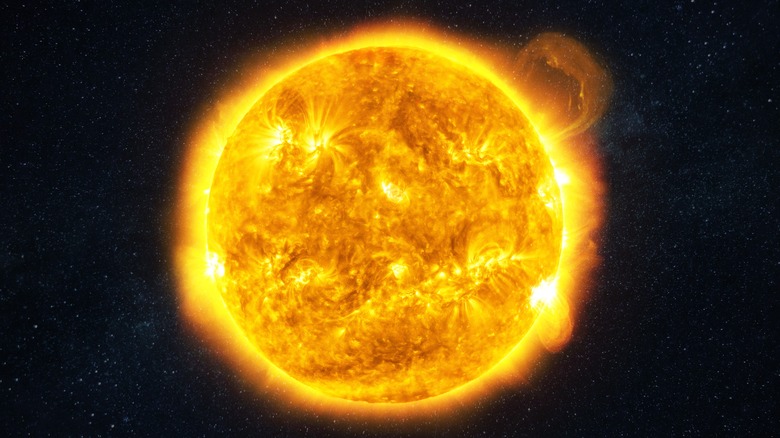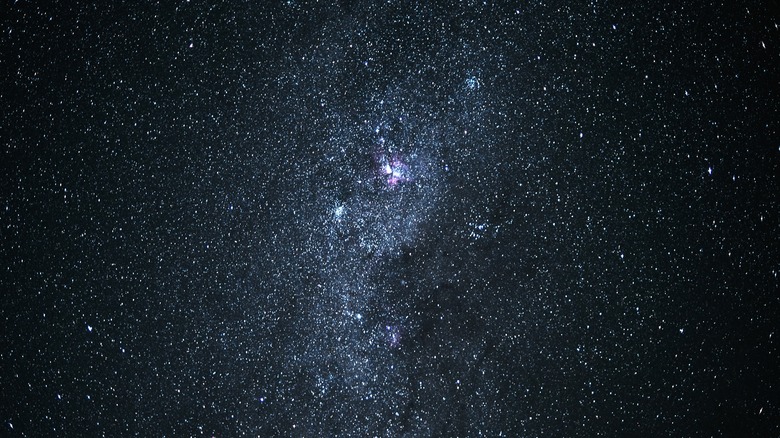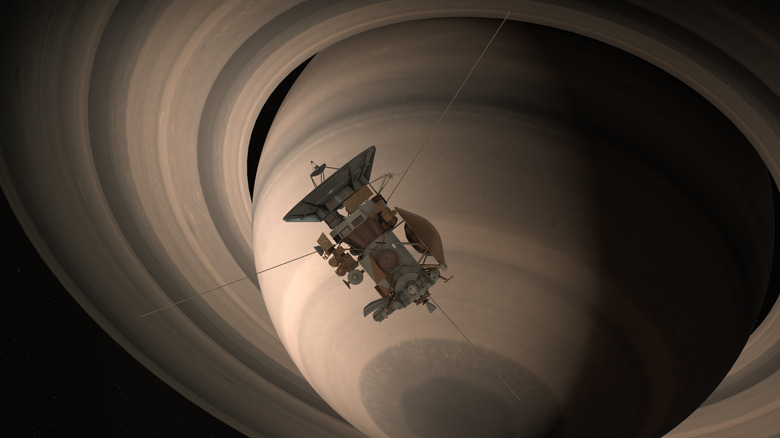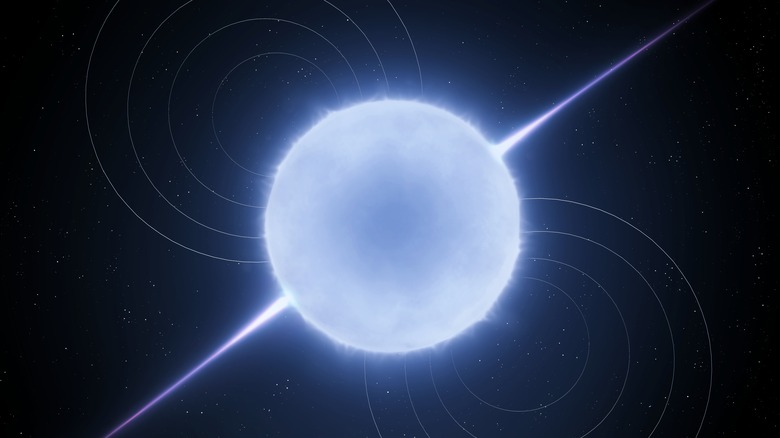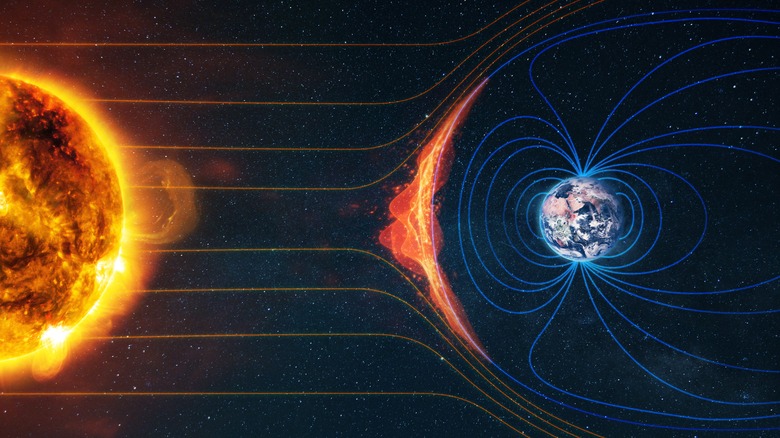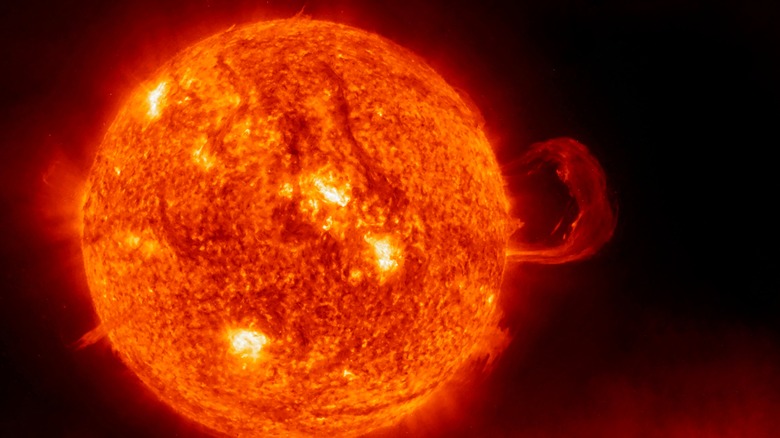9 Most Bizarre Sounds Scientists Ever Recorded From Space
Whether you remember it from high school physics, or from your favorite Signorney Weaver sci-fi movie, we all know that sound doesn't travel in space. This is due to it being a vacuum — a vast atomless void that means particles can't collide to allow sound to travel.
While this is all true, cutting edge technology means it is now possible for us to "hear" sounds from space, and it seems that the cosmos have a lot to say. From black holes colliding to solar winds, there are countless recordings of the noises of space that are available for us to hear.
These aren't sounds in the traditional sense, but instead are waves and electromagnetic signals that have been picked up by specialist equipment and converted into frequencies in the range of human hearing. From the Earth's chorus waves to plasma waves from the unknown number of solar systems in the Milky Way, the celestial sounds range from bird-like chirping to eerie whistling. If you've always wanted to listen into outer space, turn up your volume and join us as we explore nine of the most bizarre sounds scientists have ever recorded from space.
Black holes merging
Black holes are a fascinating space entity, annihilating anything that comes near them, including light itself, like a giant space Hoover, but can you imagine what would happen if two of them combined? You may assume that a seemingly catastrophic event like this would make a deafening noise to match, but of course in the vacuum of space, this is not the case.
Scientists have managed in recent years to detect the waves created when celestial bodies collide and have converted this into sound. Instead of the deafening crash you may expect, the event causes a tiny little "bleep" noise, which scientists call a "chirp." In 2015, LIGO Labs recorded these waves from 1.3 billion light years away, in what was the first (and wildly important) detection of gravitational waves from a black hole — or in this case, two.
While to us mere mortals it may sound like a quiet little blip, to astrophysicists, it marked an incredible new age of information for the depths of outer space. For the first time, we were able to "hear" this incredible event, and the information that can be extrapolated from this could be very significant in future decades.
Jupiter's magnetosphere on a Ganymede flyby
If you had to guess which planet in our solar system was the most likely to be making the most space noise, you would likely assume it would be Jupiter. As an enormous gas giant with its red spot larger than Earth, as well as its ever-increasing number of moons (Jupiter actually has nearly 100 moons — 12 more than previously thought), its magnetic field dwarfs those of the rest of the galaxy.
On a flyby passing Ganymede, Jupiter's largest moon, the instruments on NASA's Juno spacecraft picked up emissions from the magnetosphere, which were then converted into sound waves. Sounding a little like a garbled message from R2D2, the high pitched chirps and beeps change frequency as the recording progresses, which apparently represents entrance into a different region of the magnetosphere.
The reason for these sounds being produced could possibly be due to the fact that Ganymede has its own magnetosphere, and is the only known moon to have one. The magnetic environment between Jupiter and Ganymede is unique within our solar system, that and could be the reason for the amazing sounds picked up while passing the gigantic moon.
Solar winds
If the idea of solar winds puts into your mind the thought of a summer breeze, you'd be in for a shock if you ever came across one. The "wind" that emanates from the sun is, in fact, a stream of protons and electrons that can travel as fast as 1 million miles per hour.
While you would imagine that a gale of that ferocity would cause a fair commotion, with space being a vacuum, you wouldn't be able to hear it in the traditional sense, even if you had the privilege of being near it. Instead, the Parker Solar Probe, which is in orbit around the sun and tasked with studying the solar winds, has been able to detect the particles and turn them into sounds that we can hear. (And if you're curious, Voyager 1 has also sent back sounds of the solar winds.)
The result is a slightly eerie whooshing noise, interspersed with rustling and some curious whistling noises that sound a little like the introduction to a sci-fi horror movie. These fairly slow-paced sounds do not represent the picture of the effect the solar winds are actually having on their immediate surroundings, however. They can cause auroras (which actually make sounds of their own) on nearby planets, including Mercury and Earth, and can even create power blackouts if they whizz closely past our magnetic field. While listening to these unusual sounds through computer speakers is fascinating, the reality is that the force behind the noise is a formidable stream of solar energy, as geomagnetic storms of this type are actually quite dangerous.
Interstellar space, as Voyager 1 left the heliosphere
Since it launched in 1977, Voyager 1 has been on a ground-breaking — or perhaps space-breaking — journey around our solar system, flying past Jupiter and Saturn as was originally planned, and then continuing to travel further from Earth. In 2012, it broke free of the sun's influence and made the amazing leap to interstellar space. In doing so, it recorded plasma waves that scientists were able to convert into sound, allowing us to hear noises beyond our own solar system for the first time.
Since the pitch and frequencies of the sounds change depending on the gas they are traveling through, astrophysicists could use them to judge whether the spacecraft was still within our solar system. In 2013, the recordings that were sent back proved that Voyager 1 had indeed left the heliosphere, as the frequency of those sounds had increased by nearly a factor of 10. As of the middle of 2025, both Voyager 1 and Voyager 2 are billions of miles away from Earth — Voyager 1 is a staggering 15 billion miles away – and they continue to send data back from the far reaches of space (in fact, Voyager 2 even found a strange interstellar space boundary in its travels).
Saturn's radio emissions
As a rule, larger planets have a greater magnetic field than smaller ones, so when you take a planet nearly 10 times larger than Earth, such as Saturn, you can assume it's going to be rocking some serious magnetism. In 2017, NASA spacecraft Cassini recorded the electromagnetic waves between Saturn and one of its 274 moons, Enceladus. This moon is much more closely connected to Saturn than our own moon is to Earth, and it regularly spouts out water in toward Saturn and beyond.
Two weeks before Cassini was kindly dumped into Saturn's atmosphere by NASA, it picked up the plasma waves being generated between Saturn and Enceladus, which scientists were able to convert into regular noise for us to hear.
The resulting soundtrack sounds like an eerie '80s synth pop track, full of mysterious whistles and electronic beats, with a haunting melody playing behind it. These amazing recordings give NASA scientists crucial insights into the interaction between Saturn and its moons, and helps to deepen their collective knowledge of plasma waves and the strong magnetospheres of the gas giants.
Pulsars
If you were able to tune in to the language of the universe, you would hear steady ticking noises, almost like a cosmic metronome. This ticking comes from pulsars, remnants of enormous stars that have collapsed in on themselves and are now spinning around the universe keeping time.
Pulsars are neutron stars, which means that a star many times heavier than our sun had collapsed, creating a supernova in the process. Once collapsed, the pulsar retains its enormous mass, but shrinks down to a tiny fraction of its original size, making it one of the densest objects in the universe. As it spins, electromagnetic waves are given out at each end, and these can be detected on Earth, with only the side facing us being recorded. This is how they got their name, as it appears as a pulse, since we can only see, or hear, one side.
The pulses have been detected by large radio telescopes, then converted into ticking sounds that we can hear. Not only do they provide us with fascinating insight into what lies beyond our atmosphere, but they are actually used by scientists as an incredibly accurate clock. They used the reliable pulses to take other measurements and to help them with calculations as they are mapping out deep space. But for the rest of us, the ticking pulsar is simply a satisfying rhythmic sound joining the others on this list that add to the wonder of the cosmos.
The flipping of Earth's magnetic fields
We've spent our whole lives learning things about the North Pole: Polar bears live there but penguins don't, it experiences six months of daylight and six of darkness, and of course, it is the home of Santa Claus. What most of us weren't told, however, is that it used to be the South Pole.
We are not talking about the geographical location of the North Pole, but rather the magnetic North Pole, which switched around 780,000 years ago, and will likely do so again in the future. Though the last full switch was almost a million years ago, a temporary flip (called the Laschamp event) occurred a mere 41,000 years ago, and space scientists have recreated the unsettling noise it likely made.
Having studied Earth's magnetic field at length, scientists from Denmark and Germany released their interpretation of the sounds that would have accompanied the Laschamp event, and the result sounds a little like a large wooden object slowly folding in on itself. There is a lot of creaking, a bit of scraping, with background notes that almost sound melodic. While these are not directly converted noises like the others on this list, they are essentially a reconstruction of past space events, and are still crucial in gaining insight into the effect of magnetism on planets and other celestial bodies.
Chorus radio waves from Earth
Another fascinating "sound" that is happening all around us and we can't hear, is Earth singing to itself. Known as chorus waves, they are in fact magnetic waves that surge through Earth's plasma, particularly as a result of intense space storms.
These chorus waves have been detected as they travel through the Van Allen radiation belts, which contain charged particles from the sun. The waves have been recorded by the Van Allen probes, and converted into audible sound. The recording is a pleasing sound, which feels like a cross between birdsong and whale song — bright and melodic, which is an encouraging song for our planet to be singing.
As positive as these recordings sound, the chorus waves could potentially be dangerous. Intense storms could cause worryingly high levels of radiation, which could negatively impact satellites and spacecraft around Earth's atmosphere. By studying the existing chorus wave recordings, astrophysicists can better predict where and when these more dangerous waves could occur, and have a better chance of preventing disaster when they do.
The sun's oscillations
With all the secret noise that celestial bodies have been making without our knowledge, it would be safe to assume that the largest object in our solar system would join in on the action. Indeed, the sun doesn't disappoint, and our star produces a ridiculously loud noise that, thankfully, we are unable to hear.
According to heliophysicist Craig de Forest, the noise created by the sun would be 100 decibels by the time it reached Earth, in spite of having traveled 92 million miles to get here. Considering this is the equivalent of a tractor or a lawnmower, we can be glad that we aren't subjected to its constant hum.
The sounds are made by solar oscillations, which are massive pressure waves on the surface and throughout the sun. Scientists have been able to measure the waves and convert them into a frequency that the human ear can detect by speeding them up 42,000 times. The resulting rhythmic hum allows us to hear the cosmic heartbeat of our star, and it allows scientists to further understand what is going on in that huge, burning ball of gas.
